Services

(Snap On Dentures)
Overdenture implants

Laser Dentistry

Laser Fillings

Bone Regeneration

Porcelain Crowns

Endodontics

Zoom Whitening

Smile design

Clear correct

(Snap On Dentures)
Overdenture implants

Laser Dentistry

Laser Fillings

Bone Regeneration

Porcelain Crowns

Endodontics

Zoom Whitening

Smile design

Clear correct
Overdenture supported by implants
Overdenture restorations are generally divided into two main categories: removable-bar restorations or click-mechanism restorations - Ball attachment, Locator system, and OT Equator. All systems can be easily placed and removed for better oral hygiene.
Overdenture restorations are generally divided into two main categories: removable-bar restorations or click-mechanism restorations - Ball attachment, Locator system, and OT Equator. All systems can be easily placed and removed for better oral hygiene.
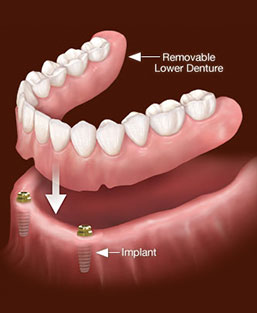
Dr. Barrandey has an especially training in laser Dentistry
How it works?
Heat, vibration and pressure are the primary causes of pain associated with the use of the traditional dental drill. Since cutting both hard and soft tissues (teeth and gums) with the WaterLase does not generate heat, vibration or pressure, many dental procedures can be performed nearly pain-free with fewer shots, less need for anesthesia, less use of the drill and fewer numb lips! Additionally, using the Waterlase for gum procedures reduces bleeding, post-operative pain, swelling and the need for pain medication in many cases. It’s just a better way to get your dentistry done!
How it works?
Heat, vibration and pressure are the primary causes of pain associated with the use of the traditional dental drill. Since cutting both hard and soft tissues (teeth and gums) with the WaterLase does not generate heat, vibration or pressure, many dental procedures can be performed nearly pain-free with fewer shots, less need for anesthesia, less use of the drill and fewer numb lips! Additionally, using the Waterlase for gum procedures reduces bleeding, post-operative pain, swelling and the need for pain medication in many cases. It’s just a better way to get your dentistry done!
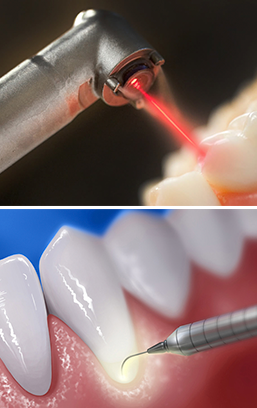
Accuracy & Precision
WaterLase dentists are able to remove tooth enamel decay (the hardest substance in the body), bone and gum tissue precisely while leaving surrounding areas unaffected. This conserves more of the precious tooth structure you were born with, helping you to maintain your natural teeth longer!
Accuracy & Precision
High speed drills can cause hairline cracks and fractures in the teeth that eventually lead to future dental problems. WaterLase reduces damage to healthy portions of the tooth and minimizes trauma.
Less Bleeding & Swelling
Due to its conservative cutting action, the WaterLase performs many soft tissue (gum) procedures with little or no bleeding and less post-op swelling
Affordable dentistry.
WaterLase dentists are able to remove tooth enamel decay (the hardest substance in the body), bone and gum tissue precisely while leaving surrounding areas unaffected. This conserves more of the precious tooth structure you were born with, helping you to maintain your natural teeth longer!
Accuracy & Precision
High speed drills can cause hairline cracks and fractures in the teeth that eventually lead to future dental problems. WaterLase reduces damage to healthy portions of the tooth and minimizes trauma.
Less Bleeding & Swelling
Due to its conservative cutting action, the WaterLase performs many soft tissue (gum) procedures with little or no bleeding and less post-op swelling
Affordable dentistry.
The dental laser offers patients the possibility of undergoing a nearly or completely painless cavity treatment experience, as there is no need for anesthesia or dental drills. The laser acts more quickly to remove any existing infected tissue in the teeth through ablation and evaporation.
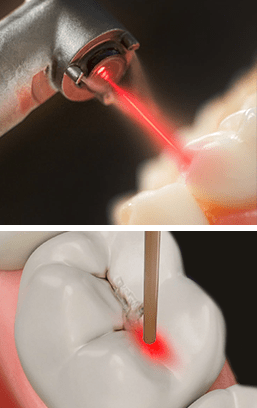
When the patient doesn’t have enough bone for the placing of the implants or the quality or quantity
of bone density is poor it is important to have bone grafting for placement of the implant at the same time.
Bone Grafting & Guided Bone Regeneration. Today, more than ever, advances in medicine and dentistry have led to new and expanded areas of treatment. Two such areas, bone grafting and guided bone regeneration (GBR) in the jawbones and around teeth have recently experienced tremendous growth. Procedures to repair and grow new bone, unheard of just a few years ago, are now part of routine dental surgical care. This page will help you better understand what bone grafting and GBR are, what options are available to you, and what benefits you may gain from these procedures.
Bone Grafting & Guided Bone Regeneration. Today, more than ever, advances in medicine and dentistry have led to new and expanded areas of treatment. Two such areas, bone grafting and guided bone regeneration (GBR) in the jawbones and around teeth have recently experienced tremendous growth. Procedures to repair and grow new bone, unheard of just a few years ago, are now part of routine dental surgical care. This page will help you better understand what bone grafting and GBR are, what options are available to you, and what benefits you may gain from these procedures.
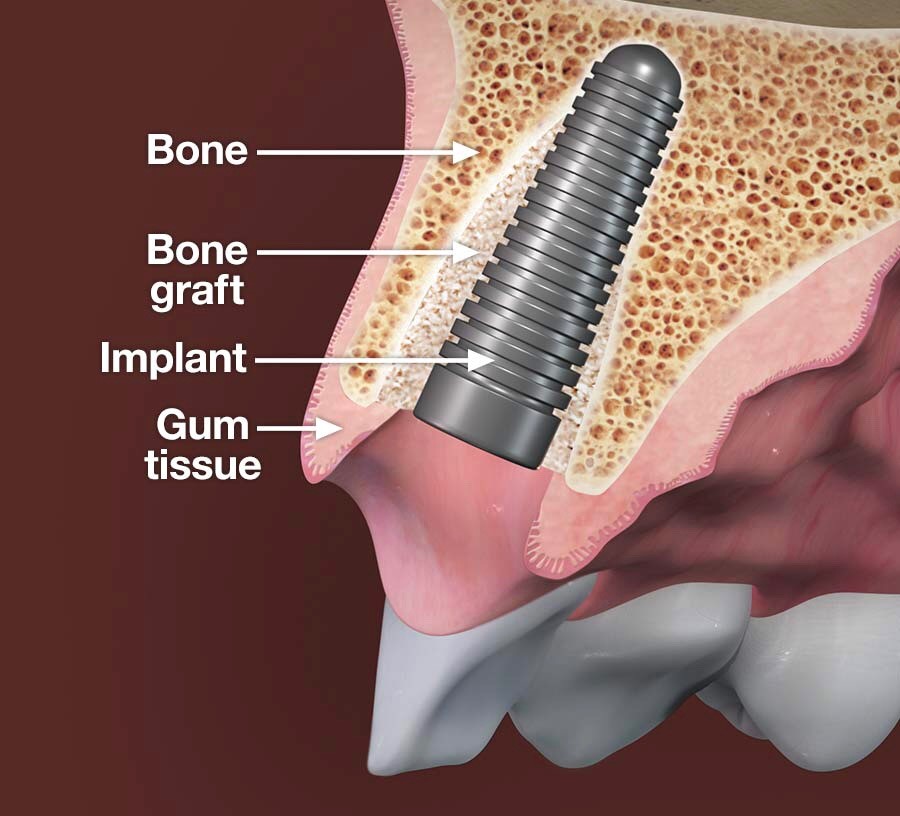

What is bone grafting & GBR?
Bone grafting is a surgical procedure that replaces missing bone with a material called a bone graft. This material not only replaces missing bone but also helps your body to regrow lost bone. This new bone growth strengthens the grafted area by forming a bridge between your existing bone and the graft. Over time the newly formed bone will replace much of the grafted material. GBR is a procedure in which a membrane is placed over the bone graft site. This membrane further encourages new bone to grow and also prevents the growth of scar tissue into the grafted site.
Why are bone grafts & GBR needed?
Bone grafts & GBR are needed when a part of your body is missing bone. This missing portion of bone is frequently called a "bony defect". Examples of jaw bone defects are: defects surrounding roots of teeth (periodontal defects); defects which occur following tooth extraction; generalized decrease in quantity of jaw bone from trauma or long-term tooth loss; defects surrounding dental implants; defects resulting from cyst or tumor surgery.
Bone grafting is a surgical procedure that replaces missing bone with a material called a bone graft. This material not only replaces missing bone but also helps your body to regrow lost bone. This new bone growth strengthens the grafted area by forming a bridge between your existing bone and the graft. Over time the newly formed bone will replace much of the grafted material. GBR is a procedure in which a membrane is placed over the bone graft site. This membrane further encourages new bone to grow and also prevents the growth of scar tissue into the grafted site.
Why are bone grafts & GBR needed?
Bone grafts & GBR are needed when a part of your body is missing bone. This missing portion of bone is frequently called a "bony defect". Examples of jaw bone defects are: defects surrounding roots of teeth (periodontal defects); defects which occur following tooth extraction; generalized decrease in quantity of jaw bone from trauma or long-term tooth loss; defects surrounding dental implants; defects resulting from cyst or tumor surgery.
Bone Regeneration
How are bone grafting & GBR procedures performed?
The following is one example of these procedures following tooth extraction.
1. The tooth is removed and the remaining tooth socket is thoroughly cleaned of all inflamed and infected tissue.
2. An appropriate bone grafting material is carefully placed into the extraction socket.
3. GBR membrane is often placed over the grafted material.
4. Sutures placed into the gum tissue allow proper healing of the surrounding soft tissues.
Are bone grafting & GBR painful procedures?
These procedures are usually done in the doctor’s office under local anesthesia or local anesthesia with I.V. sedation or occasionally general anesthesia. The procedures themselves are without pain. Post-operatively, there will be some swelling and some mild to moderate discomfort, especially from other procedures performed, such as tooth extraction, cyst removal, etc. Your doctor will prescribe an oral analgesic to help relieve your discomfort. If a more invasive second procedure is required to obtain bone (i.e. from your hip, chin area, etc.) then your post-operative discomfort will be increased but still manageable.
What special care is required after my grafting procedure?
Generally, the same prudent care required after any dental surgical procedure will be sufficient following jaw bone grafting & GBR. The area must be kept clean, often with the help of a prescribed mouth rinse. An antibiotic, if prescribed by your doctor, must be taken. Antibiotics, however, are not always required. Undue pressure over the grafted site must be avoided until the new bone is well on its way to being formed. This means that previous dental prostheses, such as a removable full or partial denture, must be altered by your dentist following the grafting procedure. And finally, brush and floss your teeth as you normally do. However, avoid the gum tissues surrounding the bone graft until they are well healed (usually about six weeks).
How successful are bone grafting & GBR?
Recent advances in technology have dramatically increased the success of these procedures, leading to bone formation and resolution of the defect. However, depending upon the reason needed for these procedures, success rates will vary. Also, different graft & GBR materials seem to affect the amount of new bone formed. And finally, your own overall health will also help determine the degree to which new bone will form within the grafted site.
Are there different types of bone grafts & GBR membranes?
Yes. Some grafts are taken from different parts of the patient’s own body (i.e. from the hip bone or chin). Other grafts come from deceased human organ donors, from synthetic materials, and from highly purified bone minerals. Likewise, there are different types of GBR membranes. Some are made from synthetic polymers and must be removed during a second surgery several weeks or months later. Others are made from natural materials and are gradually resorbed (melt away) by the body.
What type of grafts are used at your office?
We use Bio-Oss which is a safe, effective bone grafting material from specialty processed bovine sources. Under the electron microscope, Bio-Oss looks very similar to human bone. Because of its similarity to human bone, Bio-Oss is highly successful in helping new bone to form. In many cases, using Bio-Oss eliminates the need for additional surgery to obtain your own bone as grafting material.
The following is one example of these procedures following tooth extraction.
1. The tooth is removed and the remaining tooth socket is thoroughly cleaned of all inflamed and infected tissue.
2. An appropriate bone grafting material is carefully placed into the extraction socket.
3. GBR membrane is often placed over the grafted material.
4. Sutures placed into the gum tissue allow proper healing of the surrounding soft tissues.
Are bone grafting & GBR painful procedures?
These procedures are usually done in the doctor’s office under local anesthesia or local anesthesia with I.V. sedation or occasionally general anesthesia. The procedures themselves are without pain. Post-operatively, there will be some swelling and some mild to moderate discomfort, especially from other procedures performed, such as tooth extraction, cyst removal, etc. Your doctor will prescribe an oral analgesic to help relieve your discomfort. If a more invasive second procedure is required to obtain bone (i.e. from your hip, chin area, etc.) then your post-operative discomfort will be increased but still manageable.
What special care is required after my grafting procedure?
Generally, the same prudent care required after any dental surgical procedure will be sufficient following jaw bone grafting & GBR. The area must be kept clean, often with the help of a prescribed mouth rinse. An antibiotic, if prescribed by your doctor, must be taken. Antibiotics, however, are not always required. Undue pressure over the grafted site must be avoided until the new bone is well on its way to being formed. This means that previous dental prostheses, such as a removable full or partial denture, must be altered by your dentist following the grafting procedure. And finally, brush and floss your teeth as you normally do. However, avoid the gum tissues surrounding the bone graft until they are well healed (usually about six weeks).
How successful are bone grafting & GBR?
Recent advances in technology have dramatically increased the success of these procedures, leading to bone formation and resolution of the defect. However, depending upon the reason needed for these procedures, success rates will vary. Also, different graft & GBR materials seem to affect the amount of new bone formed. And finally, your own overall health will also help determine the degree to which new bone will form within the grafted site.
Are there different types of bone grafts & GBR membranes?
Yes. Some grafts are taken from different parts of the patient’s own body (i.e. from the hip bone or chin). Other grafts come from deceased human organ donors, from synthetic materials, and from highly purified bone minerals. Likewise, there are different types of GBR membranes. Some are made from synthetic polymers and must be removed during a second surgery several weeks or months later. Others are made from natural materials and are gradually resorbed (melt away) by the body.
What type of grafts are used at your office?
We use Bio-Oss which is a safe, effective bone grafting material from specialty processed bovine sources. Under the electron microscope, Bio-Oss looks very similar to human bone. Because of its similarity to human bone, Bio-Oss is highly successful in helping new bone to form. In many cases, using Bio-Oss eliminates the need for additional surgery to obtain your own bone as grafting material.
Traditionally, porcelain dental crowns required a metal framework to give the crown adequate
strength. But with modern advances in bonding technology, dental crowns can be made of all-porcelain (dental
veneers).
Porcelain is a beautiful restoration material because it reflects light just like your natural teeth do. It is excellent in mimicking the translucency and gloss of your natural tooth. In fact, an all-porcelain crown created by an expert cosmetic dentist like Dr. Barradey will blend in perfectly and look identical to the surrounding teeth.
Porcelain is a beautiful restoration material because it reflects light just like your natural teeth do. It is excellent in mimicking the translucency and gloss of your natural tooth. In fact, an all-porcelain crown created by an expert cosmetic dentist like Dr. Barradey will blend in perfectly and look identical to the surrounding teeth.
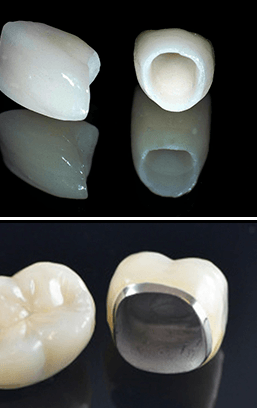
A Comparison of All-Porcelain to
Porcelain Fused-to-Metal Crowns
Porcelain crowns offer many benefits:
Porcelain reflects light just like your tooth enamel. It is a beautiful way to restore a tooth. When metal is used, the porcelain is baked on to the metal. This action results in an opaque-looking layer so it tends to lookfake.
It is almost inevitable that a thin black line will form along the gumline when metal is used. Dentists can make an effort to conceal the metal below the gum, but there is no way to guarantee that it will remain hidden. When all-porcelain is used, it is bonded directly to the tooth so there is no risk of a black line appearing.
Porcelain Fused-to-Metal Crowns
Porcelain crowns offer many benefits:
Porcelain reflects light just like your tooth enamel. It is a beautiful way to restore a tooth. When metal is used, the porcelain is baked on to the metal. This action results in an opaque-looking layer so it tends to lookfake.
It is almost inevitable that a thin black line will form along the gumline when metal is used. Dentists can make an effort to conceal the metal below the gum, but there is no way to guarantee that it will remain hidden. When all-porcelain is used, it is bonded directly to the tooth so there is no risk of a black line appearing.
Traditionally, porcelain crowns haven’t been as strong as porcelain-fused-to-metal. But with
newer materials and new technology, they have become strong enough to be used on back teeth.
All-porcelain crowns require additional training beyond dental school in order to learn how to use advanced bonding technology. Dr. Barrandey is confident in her abilities in using these advanced techniques. Some dentists just feel more comfortable with the basic porcelain-fused-to-metal techniques they learned in dental school.
The cost is less for porcelain-fused-to-metal. But if the appearance of your crown is an important factor to you, it will be well worth it for the confidence and quality of life it provides.
All-porcelain crowns require additional training beyond dental school in order to learn how to use advanced bonding technology. Dr. Barrandey is confident in her abilities in using these advanced techniques. Some dentists just feel more comfortable with the basic porcelain-fused-to-metal techniques they learned in dental school.
The cost is less for porcelain-fused-to-metal. But if the appearance of your crown is an important factor to you, it will be well worth it for the confidence and quality of life it provides.
A Comparison of All-Porcelain to Porcelain Fused-to-Metal Crowns
Porcelain crowns offer many benefits:
Porcelain reflects light just like your tooth enamel. It is a beautiful way to restore a tooth. When metal is used, the porcelain is baked on to the metal. This action results in an opaque-looking layer so it tends to look fake.
It is almost inevitable that a thin black line will form along the gumline when metal is used. Dentists can make an effort to conceal the metal below the gum, but there is no way to guarantee that it will remain hidden. When all-porcelain is used, it is bonded directly to the tooth so there is no risk of a black line appearing.
Traditionally, porcelain crowns haven’t been as strong as porcelain-fused-to-metal. But with newer materials and new technology, they have become strong enough to be used on back teeth.
All-porcelain crowns require additional training beyond dental school in order to learn how to use the advanced bonding technology. Dr. Barrandey is confident in his abilities in using these advanced techniques. Some dentists just feel more comfortable with the basic porcelain-fused-to-metal techniques they learned in dental school.
The cost is less for porcelain-fused-to-metal. But if the appearance of your crown is an important factor to you, it will be well worth it for the confidence and quality of life it provides.
Porcelain crowns offer many benefits:
Porcelain reflects light just like your tooth enamel. It is a beautiful way to restore a tooth. When metal is used, the porcelain is baked on to the metal. This action results in an opaque-looking layer so it tends to look fake.
It is almost inevitable that a thin black line will form along the gumline when metal is used. Dentists can make an effort to conceal the metal below the gum, but there is no way to guarantee that it will remain hidden. When all-porcelain is used, it is bonded directly to the tooth so there is no risk of a black line appearing.
Traditionally, porcelain crowns haven’t been as strong as porcelain-fused-to-metal. But with newer materials and new technology, they have become strong enough to be used on back teeth.
All-porcelain crowns require additional training beyond dental school in order to learn how to use the advanced bonding technology. Dr. Barrandey is confident in his abilities in using these advanced techniques. Some dentists just feel more comfortable with the basic porcelain-fused-to-metal techniques they learned in dental school.
The cost is less for porcelain-fused-to-metal. But if the appearance of your crown is an important factor to you, it will be well worth it for the confidence and quality of life it provides.
We have endodontic care. Our Doctors are all Specialist members of the Mexican Association of
Endodontists. They are uniquely qualified to offer you the best in endodontic care. Our expert team, led by
respected endodontic specialist Ericka Nava, DDS, MS, includes an experienced endodontic staff. We provide the
highest standard of professional care in a friendly, comfortable environment. A root canal is usually all that
is needed to save teeth with injured pulp tissue from extraction. Non-surgical treatment can be performed to
eliminate the diseased pulp. This injured pulp is removed and the root canal system is thoroughly cleaned and
sealed. Also we have periodontics services, we are dental specialist in Mexico.
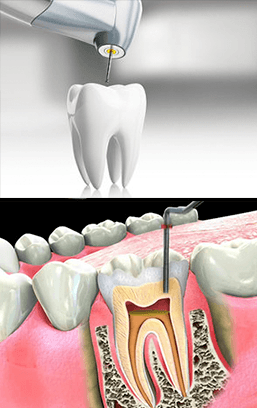
Zoom is an in-office teeth bleaching system from Discus Dental (dental cosmetics). It delivers
dramatic results in only one office visit. Combined with take-home bleaching as a follow-up, it can whiten your
teeth dramatically. The powerful whitening gel contains high levels of peroxide. This bleaching agent is
activated by a special Zoom light that releases oxygen to eliminate years of staining and discoloration. This
powerful whitening system noticeably brightens the enamel and dentin of your teeth, up to 10 shades whiter.
After only three, 15-minute sessions of the Zoom whitening system, your teeth will be permanently whiter. Even
if you gradually pick up stains down the road, your teeth will always be whiter than they were before using
Zoom.
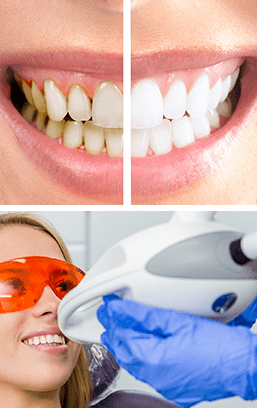
Smile design is a set of procedures aimed at achieving a harmonious and balanced smile. This treatment focuses on improving the color, alignment, and shape of the teeth, tailored to each patient’s specific needs.
Techniques that may be part of a smile design include teeth whitening, veneers, orthodontics, and gingivectomy. Since it is a personalized procedure, a treatment plan is created based on the patient’s facial features and expectations.
Techniques that may be part of a smile design include teeth whitening, veneers, orthodontics, and gingivectomy. Since it is a personalized procedure, a treatment plan is created based on the patient’s facial features and expectations.
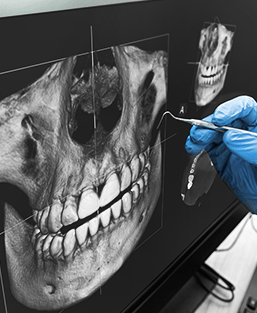
ClearCorrect® aligners are a system designed to correct the position of teeth. Unlike traditional orthodontics, ClearCorrect® offers a discreet alternative, customized to each patient’s specific needs.
These aligners are transparent, removable, and comfortable, allowing you to easily take them on and off. This makes it simple to go about your daily activities, such as eating and drinking, without inconvenience or risk of irritation.
These aligners are transparent, removable, and comfortable, allowing you to easily take them on and off. This makes it simple to go about your daily activities, such as eating and drinking, without inconvenience or risk of irritation.
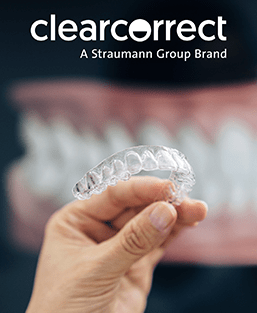
All our work
is done with:

is done with:

